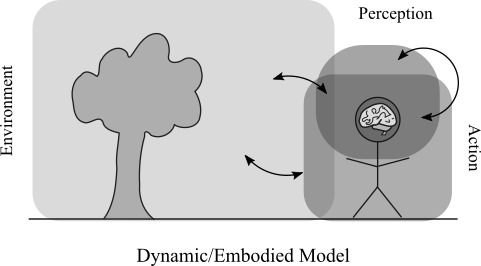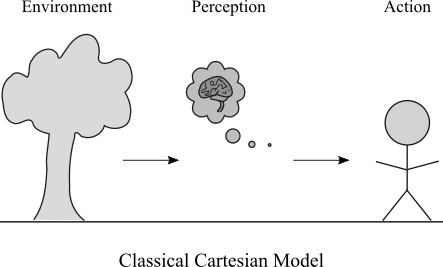

自閉症から自閉症スペクトラム障害(ASD)へ
Autism Conundrum
一群の奇妙な人たちに関する記録は、レオ・カーナー の1943年の論文を嚆矢とする。カーナーは、Kanner, L. (1943), Autistic Disturbances of Affective Contact, Nervous Child, 2, pp.217-250.において、自閉障害という言葉をはじめて使った。では、情動的な接触が自閉により障害される(乱れる)とはどのようなことを意味す るのか。それは「発達(development)」と「精神ないしは心の正常/異常(psychotic normal / abnormal)」が交錯するところに登場する。
自閉症(autism)はもともと統合失調症の下位 分類(小児分裂病)としてスタートした。この30年間では、その分類をめぐっておよそ次のような変化がみられた。
すなわち、(1)広汎性発達障害 (pervasive developmental disorders, PDD):ICD-10, 1990と分類されるもの。そして、広汎性発達障害は、(小児)自閉症、アスペルガー症候群 、非定型自閉症およびその他の広汎性発達障害などに分けられていた。(ICD-10, F00-F99:日本語)
ICD10の2003年版。PDD(F84)の部分 のみ。
Pervasive developmental
disorders F84 広汎性発達障害
A group of disorders
characterized by qualitative abnormalities in reciprocal social
interactions and in patterns of communication, and by a restricted,
stereotyped, repetitive repertoire of interests and activities. These
qualitative abnormalities are a pervasive feature of the individual's
functioning in all situations.
Use additional code, if desired, to identify any associated medical
condition and mental retardation.
F84.0 Childhood autism
A type of
pervasive developmental disorder that is defined by: (a) the presence
of abnormal or impaired development that is manifest before the age of
three years, and (b) the characteristic type of abnormal functioning in
all the three areas of psychopathology: reciprocal social interaction,
communication, and restricted, stereotyped, repetitive behaviour. In
addition to these specific diagnostic features, a range of other
nonspecific problems are common, such as phobias, sleeping and eating
disturbances, temper tantrums, and (self-directed) aggression.
Autistic disorder
Infantile:
. autism
.psychosis
Kanner's syndrome
Excludes:
autistic psychopathy ( F84.5 )
F84.1 Atypical autism
A type of pervasive developmental
disorder that differs from childhood autism either in age of onset or
in failing to fulfil all three sets of diagnostic criteria. This
subcategory should be used when there is abnormal and impaired
development that is present only after age three years, and a lack of
sufficient demonstrable abnormalities in one or two of the three areas
of psychopathology required for the diagnosis of autism (namely,
reciprocal social interactions, communication, and restricted,
stereotyped, repetitive behaviour) in spite of characteristic
abnormalities in the other area(s). Atypical autism arises most often
in profoundly retarded individuals and in individuals with a severe
specific developmental disorder of receptive language.
Atypical childhood psychosis
Mental retardation with autistic features
Use additional code (F70-F79), if
desired, to identify mental retardation.
F84.2 Rett's syndrome
A condition, so far found only in
girls, in which apparently normal early development is followed by
partial or complete loss of speech and of skills in locomotion and use
of hands, together with deceleration in head growth, usually with an
onset between seven and 24 months of age. Loss of purposive hand
movements, hand-wringing stereotypies, and hyperventilation are
characteristic. Social and play development are arrested but social
interest tends to be maintained. Trunk ataxia and apraxia start to
develop by age four years and choreoathetoid movements frequently
follow. Severe mental retardation almost invariably results.
F84.3 Other childhood
disintegrative disorder
A type of pervasive developmental
disorder that is defined by a period of entirely normal development
before the onset of the disorder, followed by a definite loss of
previously acquired skills in several areas of development over the
course of a few months. Typically, this is accompanied by a general
loss of interest in the environment, by stereotyped, repetitive motor
mannerisms, and by autistic-like abnormalities in social interaction
and communication. In some cases the disorder can be shown to be due to
some associated encephalopathy but the diagnosis should be made on the
behavioural features.
Dementia infantilis
Disintegrative psychosis
Heller's syndrome
Symbiotic psychosis
Use additional code, if desired,
to identify any associated neurological condition.
Excludes:
Rett's syndrome ( F84.2 )
F84.4 Overactive disorder
associated with mental retardation and stereotyped movements
An ill-defined disorder of
uncertain nosological validity. The category is designed to include a
group of children with severe mental retardation (IQ below 35) who show
major problems in hyperactivity and in attention, as well as
stereotyped behaviours. They tend not to benefit from stimulant drugs
(unlike those with an IQ in the normal range) and may exhibit a severe
dysphoric reaction (sometimes with psychomotor retardation) when given
stimulants. In adolescence, the overactivity tends to be replaced by
underactivity (a pattern that is not usual in hyperkinetic children
with normal intelligence). This syndrome is also often associated with
a variety of developmental delays, either specific or global. The
extent to which the behavioural pattern is a function of low IQ or of
organic brain damage is not known.
F84.5 Asperger's syndrome
A disorder of uncertain
nosological validity, characterized by the same type of qualitative
abnormalities of reciprocal social interaction that typify autism,
together with a restricted, stereotyped, repetitive repertoire of
interests and activities. It differs from autism primarily in the fact
that there is no general delay or retardation in language or in
cognitive development. This disorder is often associated with marked
clumsiness. There is a strong tendency for the abnormalities to persist
into adolescence and adult life. Psychotic episodes occasionally occur
in early adult life.
Autistic psychopathy
Schizoid disorder of childhood
F84.8 Other pervasive
developmental disorders
F84.9 Pervasive developmental
disorder, unspecified
DSM-III, 1980では、幼児自閉症・全症候群存在とされたが、重要なことは、自閉症は精神病のカテゴリーではなく広汎性発達障害(pervasive developmental disorders, PDD)という新カテゴリーに位置づけられるようになったことである。
次に、(2)広汎性発達障害:DSM-IV, 1995と分類されるもの。広汎性発達障害(PDD)は、自閉性障害、レット障害、小児期崩壊性障害、アスペルガー障害、特定不能の広汎性発達障害 (PDD-NOS)に五分類された。PDD-NOSとは、pervasive developmental disorders not otherwise specified のアクロニム(頭文字略号)であり、前二者の残余カテゴリーである。自閉性障害、アスペルガー障害は、古典的自閉症の三基準を満たしていた。
(3)DSM-IV-TR, 2000. は第4版の改訂版で、基本的にその枠組みが継承された。
DSM-IV-TRでは、広汎性発達障害は次のよう
に診断されるようになった。【1】対人相互反応における質的な障害、【2】意思伝達の質的な障害、③常同的かつ反復的な限定された行動、の三項目のうち、
自閉症障害は3つの基準は満たしているもの、アスペルガー障害は【2】を満たさないもの、PDD-NOSは【1】もしくは【3】を満たさないもの。DSM
-Ⅳ-TRの時点では、上述の【1】、【2】、【3】の三項目がPDDとされた。
そして、その13年後の(4)DSM-5, 2013の登場である。ここで重要なことは、自閉症スペクトラム障害(Autism Spectrum Disorder, ASD)という新たなカテゴリーが登場し、以前は自閉症と診断されたものの大部分および以前はアスペルガー障害とされたものの大部分--具体的には上掲の 障害(自閉性障害、アスペルガー障害、特定不能の広汎性発達障害)--が含まれることになった。DSM-5では、ASDは、【1】社会性の障害と【2】常 同性の両方を満たす必要がある。このため、自閉症スペクトラム障害(ASD)という包括的カテゴリーが生まれるとともに、アスペルガー障害が独立した診断 としては排除されたのである(クーパー 2015:85-86)。
なお、スペクトラム概念の提唱者は、アスペルガー派 のローナ・ウィング(Lorna Wing, 1928-2014)である。ASDは、自閉症の3つの特徴(1:対人コミュニケーションの永続的な欠陥、2:限局された行動、興味あるいは活動の反復的 様式、そして、3:これらの徴候の小児期早期の発現、である)を満たすものとされている(大井 2013:24-25)
と同時に、(5)ASDとは別に、社会的(語用論 的)コミュニケーション障害(Social (pragmatic) Communication Disorder, SCD)が設けられた。これらの用語法の策定以降、新しい定義から術語が除外される一方で別のところから加わるという状況があり、さらに支援団体のロビー 活動も加わったために、現場ではさまざまな混乱が生じた。DSM-5作成実行チーム委員長ディビッド・クッファーの度重なる発言にも見られる通り、この診 断基準の設定には(医療福祉関係の)それまでの過剰診断への対応、コスト低減なども目論まれたようである。このような混乱についてはクーパー(2015) の第5章に詳しい。
DSM-5におけるASDの定義は、科学論的に考え ても、診断のラベルを決め、適切な社会的ケアと治療手段(=寛解のための方策)の指針を決定することであり、病気の客観的な分類や病気の普遍性(=不変 性)を意味するものではない。その扱いと、原因仮説についても、社会的ラベル説から、生物学的、脳科学的、遺伝的(エピジェネティクスを含む)、心理的、 環境的な仮説まで多様である。
| AC |
autistic and/or cousin |
自閉症の診断を受けていないが、自閉っぽい人を示すために使われる。 |
| ASD |
Autism Spectrum Disorder |
自閉症スペクトラム障害 |
| ANI |
Autism Network Internatioal | 自閉症者のセルフアドボカシー団体 |
| FAAAS |
Familes of Adults Affected by Asperger's Syndrome |
アルペルガー症候群によって影響を受けた成人家族の会 |
| InLy |
Independent living on the autistic spectrum |
自閉症または関係する状態の人たちのためのメーリングリスト |
| INST |
Institute for the Study of the Neurologically Typical |
定型発達者研究のための研究所(ジョーキングあるいは皮肉) |
| NT |
Neurotypical |
定型発達、自閉的な型の脳を持たない人(Normal より具体的な概念)Neurotypical syndrome 定型発達症候群:
「ニューロタイピカル症候群」とはニューロダイバーシティ運動の一部によって造られた風刺的で非医学的な用語であり、ニューロタイピカルな人々に結びつけ
られる特性をユーモアを交えて描写する。これらを「症候群」として位置付けることで、社会的な同調圧力を浮き彫りにする。対照的に、「ニューロティピカ
ル」(NT)とは、自閉症やADHDといったニューロダイバージェント状態に関連する条件を持たず、神経学的発達と機能が社会内で典型的と見なされる個人
に対する標準的な用語である。 |
| OCD |
Obsessive-Compulsive Disorder |
強迫性障害 |
| TOM |
Theory of Mind |
心の理論 |
| ND |
Neurodiversity |
神経多様性、ニューロダイヴァーシティ |
★イアン・ハッキングにおけるASDの加速増殖仮説
神経多様社会のマイノリティであるオーティズム者 (ASD)にとって非ASD(=NTS者)が作り上げる言説空間が多くの被害意識の源泉になっているという現象はASDがNTSに逆に大きなインパクトを 齎して反ワクチンや陰謀説のサイトを活況化させる.つまり社会のASD化が加速する(Hacking 2007)。
ハッキングによる「ある種の人間」のタイプを作り出す作業を7つのステップに分けている。1)数を数える、2)数値化する、3)規範を作成する、4)相互に関連づける、5)医療化する、6)生物学化する、7)遺伝子の問題に還元する。
リンク
文献
その他の情報
Copyleft,
CC, Mitzub'ixi Quq Chi'j, 1996-2099